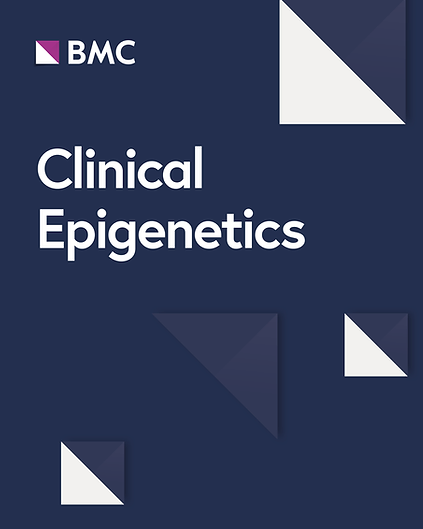DNMT1/miR-152-3p/SOS1 信号轴促进非小细胞肺癌干细胞的自我更新和肿瘤生长
IF 4.8
2区 医学
Q1 GENETICS & HEREDITY
引用次数: 0
摘要
CSLCs(癌症干细胞样细胞)是肿瘤发生的核心,受到表观遗传修饰的内在影响。本研究旨在阐明 DNMT1/miR-152-3p/SOS1 轴调控 LCSLCs(肺癌干细胞样细胞)自我更新和肿瘤生长的内在机制。使用 TargetScan Human 8.0 预测了 miR-152-3p 的靶基因。在悬浮培养的非小细胞肺癌(NSCLC)细胞系 H460 和 A549 细胞衍生的球状细胞中比较了 LCSLC 的自我更新和肿瘤生长。通过体外和体内功能增益实验评估了 DNMT1/miR-152-3p/SOS1 轴的功能效应。此外,我们还采用荧光素酶报告实验来分析 DNMT1、miR-152-3p 和 SOS1 之间的相互作用。我们的研究结果表明,DNMT1 和 miR-152-3p 之间存在负相互作用,导致 miR-152-3p 水平降低。这反过来又会导致 miR-152-3p 对靶基因 SOS1 的抑制作用减弱,最终激活 SOS1,并在 LCSLC 的自我更新和肿瘤生长中发挥重要作用。然而,SOS1 的改变并不影响 DNMT1/miR-152-3p 的调控。因此,有理由推断 DNMT1/miR-152-3p 负反馈环通过 SOS1 关键性地维持了 LCSLC 的自我更新和肿瘤生长。这项研究揭示了NSCLC中CSLC(癌症干细胞)自我更新和肿瘤生长的新机制,并确定了NSCLC治疗的潜在靶点。本文章由计算机程序翻译,如有差异,请以英文原文为准。
DNMT1/miR-152-3p/SOS1 signaling axis promotes self-renewal and tumor growth of cancer stem-like cells derived from non-small cell lung cancer
CSLCs(Cancer stem cell-like cells), which are central to tumorigenesis, are intrinsically influenced by epigenetic modifications. This study aimed to elucidate the underlying mechanism involving the DNMT1/miR-152-3p/SOS1 axis in regulating the self-renewal and tumor growth of LCSLCs (lung cancer stem-like cells). Target genes of miR-152-3p were predicted using TargetScan Human 8.0. Self-renewal and tumor growth of LCSLC were compared in suspension-cultured non-small cell lung cancer (NSCLC) cell lines H460 and A549 cell-derived globe cells. Functional effects of the DNMT1/miR-152-3p/SOS1 axis were assessed through gain-of-function experiments in vitro and in vivo. Additionally, luciferase reporter assays were employed to analyze the interaction among DNMT1, miR-152-3p, and SOS1. Our findings highlight a negative interaction between DNMT1 and miR-152-3p, resulting in reduced miR-152-3p level. This, in turn, leads to the alleviation of the inhibitory effect of miR-152-3p on the target gene SOS1, ultimately activating SOS1 and playing an essential role in self-renewal and tumor growth of LCSLC. However, the alteration of SOS1 does not affect DNMT1/miR-152-3p regulation. Therefore, it is reasonable to infer that the DNMT1/miR-152-3p negative feedback loop critically sustains self-renewal and tumor growth of LCSLC through SOS1. This study reveals a novel mechanism underpinning self-renewal and tumor growth of CSLC (cancer stem cell) in NSCLC and identifies potential therapeutic targets for NSCLC treatment.
求助全文
通过发布文献求助,成功后即可免费获取论文全文。
去求助
来源期刊

Clinical Epigenetics
ONCOLOGY-
自引率
5.30%
发文量
150
期刊介绍:
Clinical Epigenetics, the official journal of the Clinical Epigenetics Society, is an open access, peer-reviewed journal that encompasses all aspects of epigenetic principles and mechanisms in relation to human disease, diagnosis and therapy. Clinical trials and research in disease model organisms are particularly welcome.
 求助内容:
求助内容: 应助结果提醒方式:
应助结果提醒方式:


